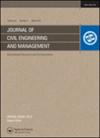基于进化博弈模型的中国装配式住宅补贴分析
IF 3.7
3区 工程技术
Q1 ENGINEERING, CIVIL
引用次数: 8
摘要
预制房屋和现浇房屋是开发商和客户选择的两种选择。政府作为政策制定者,制定激励政策,鼓励开发商和客户选择装配式住房。本文旨在通过演化博弈模型和仿真分析补贴机制,从理论上确定补贴的范围、金额和结束时间。在博弈模型中,政府补贴影响了开发商和消费者在决策过程中的互动。研究发现:1)开发商住房补贴能够降低房价,而消费者住房补贴能够提高房价;2)政府应在开发初期给予开发商较大的补贴,后期给予用户较小的补贴;3)政府应根据开发商和客户选择装配式住宅的比例来确定结束时间;4)预制比例的提高并不一定能促进装配式住宅的发展,存在一个最优的生产规模,创造最佳的发展局面。实证分析表明,该模型可以帮助政府在预算范围内制定合理、最优的补贴政策,以刺激开发商和消费者。本文章由计算机程序翻译,如有差异,请以英文原文为准。
PREFABRICATED HOUSING SUBSIDY ANALYSIS IN CHINA BASED ON AN EVOLUTIONARY GAME MODEL
Prefabricated housing and cast-in-site housing are two alternatives for selection by developers and customers. The government, as the policy maker, creates incentive policies to encourage developers and customers to choose prefabricated housing. This paper aims to analyze the subsidy mechanism to theoretically confirm the subsidies’ scopes, amounts and end times through an evolutionary game model and simulation. In the game model, government subsidies affect the interactions between developers and customers in the decision-making process. The findings are as follows: 1) The developer housing subsidy can lower the housing price, while the customer housing subsidy can increase the price; 2) The government should first offer the developers a larger subsidy amount during the early development stage and then offer the customers a smaller subsidy amount later; 3) The government should determine the end time based on the proportion of developers and customers who choose prefabricated housing; 4) A higher prefabrication ratio may not always improve the development of prefabricated housing, and there is an optimal production scale that creates the best development situation. The empirical analysis shows that this model can help the government develop reasonable and optimal subsidy policies within the limit of budget to stimulate developers and customers.
求助全文
通过发布文献求助,成功后即可免费获取论文全文。
去求助
来源期刊

Journal of Civil Engineering and Management
ENGINEERING, CIVIL-
CiteScore
6.70
自引率
4.70%
发文量
0
审稿时长
1.7 months
期刊介绍:
The Journal of Civil Engineering and Management is a peer-reviewed journal that provides an international forum for the dissemination of the latest original research, achievements and developments. We publish for researchers, designers, users and manufacturers in the different fields of civil engineering and management.
The journal publishes original articles that present new information and reviews. Our objective is to provide essential information and new ideas to help improve civil engineering competency, efficiency and productivity in world markets.
The Journal of Civil Engineering and Management publishes articles in the following fields:
building materials and structures,
structural mechanics and physics,
geotechnical engineering,
road and bridge engineering,
urban engineering and economy,
constructions technology, economy and management,
information technologies in construction,
fire protection, thermoinsulation and renovation of buildings,
labour safety in construction.
 求助内容:
求助内容: 应助结果提醒方式:
应助结果提醒方式:


